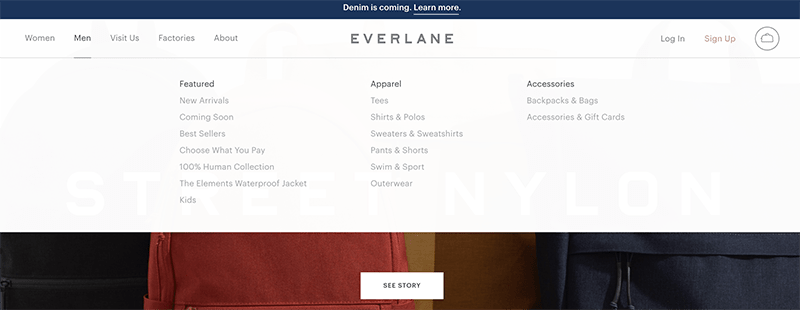If you’re constantly chasing the next blog post, social update, or email campaign, you’re not alone—but the content you’ve already created can do more through smart content repurposing, without starting from scratch every time. In fact, 60% of marketers who repurpose content report a major boost in efficiency (HubSpot, 2023).
There’s a smarter way to stretch your efforts and amplify your reach, and it’s a tactic many marketers are quietly using to work less while achieving more.
Curious? You’re about to learn how a single piece of content can unlock multiple opportunities across platforms—and how to make it happen.
So, What Is Content Repurposing?
Repurposing content means taking something you’ve already created, such as a blog article, video, or social media update, and using it in a new way. Think of it like remixing a song; you take the original elements and put them together in a fresh format.
For example, a well-researched blog post created on a platform like WordPress can be turned into a series of social media posts using scheduling tools like Tailwind or even adapted into an email campaign through MailerLite.
20 Creative Ways To Repurpose Content
Repurposing your content can be a fun and innovative way to engage your audience on multiple platforms. Here are 20 creative ways to give your content a second life.
Repurpose Written Content
Start by taking your blog posts and other written materials and transforming them into formats that work on various platforms.
1. Turn blog posts into opinion-driven LinkedIn articles
Got a long-form blog post? Repurpose it into a concise, opinion-driven article for LinkedIn. Focus on sharing personal takeaways or industry insights. Add a strong hook in the first two lines, and speak directly to the professional audience.
You can also create follow-up discussion posts to invite engagement. Start with your blog content and adapt it into bite-sized, professional insights for LinkedIn.
2. Split long guides into email sequences
Don’t let that in-depth guide sit idle. Break it into an email series by turning each section into its own email. Add value by including checklists, action steps, or tips in each message. This keeps your content in front of subscribers consistently and builds anticipation for the next part.
3. Convert FAQs into standalone blog posts
Take your most common customer questions and expand on them. Use each question as a blog title, then dive into detailed answers with real examples or use cases. This is excellent for SEO and helps build trust with your audience over time.
4. Adapt blog content into podcast scripts
Use the structure of a blog post to outline your podcast episode. Turn bullet points into talking segments, elaborate on examples, and add personal commentary to make it more conversational.
This is a great way to reach an audience that prefers audio content. To streamline production, you can use team collaboration tools like Sintra to assign tasks, share scripts, and manage your recording schedule.
5. Turn listicles into Instagram carousel posts
List-style posts translate beautifully into carousels. Each point becomes a slide with a visual hook and a short caption. For added value, turn each slide into a mini-lesson or use icons and bold headings to make the content pop. Carousels also increase swipe-through engagement.
Repurpose Video and Audio Content
Video and audio are potent tools in content marketing, offering high engagement and versatility. Repurposing this type of content maximizes your investment in production and helps you reach different audiences based on how they prefer to consume information.
6. Cut long videos into short clips for Reels or Shorts
Long-form videos like webinars, interviews, or tutorials often contain multiple golden nuggets. Trim these into short, value-packed clips in under 60 seconds.
Share them on Instagram Reels, YouTube Shorts, or TikTok to gain attention and drive traffic back to the full video. Use these snippets to highlight tips, big takeaways, or eye-opening stats.
7. Turn podcast highlights into quote graphics
Pair key phrases or strong statements from your podcast episodes with branded visuals. These graphics can be used across Instagram, LinkedIn, Pinterest, or even inside blog content as visual emphasis. Add your logo or URL to reinforce brand recognition as they get shared.
8. Transcribe videos into SEO-friendly articles
Use transcription tools or services to turn your video or audio content into written articles. Then, make it more search engine-friendly by optimizing the article with headers, keywords, and internal links.
This is especially useful when expanding your reach through Google search while improving accessibility for those who prefer reading over watching or listening.
9. Create audiograms from podcast soundbites
Take a high-impact quote or teaser from your podcast episode, add subtitles, a waveform animation, and your branding. These short, attention-grabbing audiograms can be posted to Instagram, Facebook, or X/Twitter to give listeners a preview and encourage them to check out the whole episode.
10. Compile best moments into themed highlight reels
Instead of letting great content get buried in older uploads, collect standout moments across multiple videos and edit them into a focused compilation.
These highlight reels can be themed by topic, such as “top marketing tips” or “most inspirational quotes,” and used for promotions, YouTube playlists, or event recaps.
Repurpose Visual Content
Even visual content can be repurposed in several creative ways to engage your audience and reinforce your brand identity across platforms. Visual assets are exceptionally versatile, easy to digest, eye-catching, and shareable, making them perfect for today’s fast-scrolling audiences.
11. Turn charts into infographic summaries
Charts are great for data presentation, but they often need context. Repurpose them into full infographics that explain the story behind the numbers.
You can combine several charts, icons, and short descriptions to turn complex information into a visually appealing, high-value asset that’s ideal for blog posts, Pinterest, and LinkedIn.
12. Convert slide decks into LinkedIn carousel presentations
Slide decks from webinars, internal training, or conferences can easily be turned into swipeable carousel posts. Optimize each slide with platform-specific sizing and clear, concise text. This gives your professional audience a quick way to consume valuable insights without attending the original presentation.
13. Reuse illustrations in email newsletters
Custom illustrations created for a blog or eBook can be reused in newsletters to grab attention, break up text, and reinforce your brand style. You can also rotate these visuals across different campaigns, saving design time while keeping things fresh.
14. Pin branded graphics on Pinterest
Pinterest isn’t just for lifestyle content, but it’s a visual search engine. Turn your blog headers, product visuals, or promo banners into vertical Pins. Optimize them with keyword-rich descriptions to drive traffic long after publishing the content.
15. Add captions and reuse them for Stories or Shorts
Silent video is the norm on many platforms. Adding captions makes your content accessible and more engaging, especially on mobile.
Once updated, repurpose these videos for Instagram Stories, YouTube Shorts, TikTok, or Facebook Stories. Each platform favors vertical video, so be sure to crop and format accordingly.
Repurpose Across Channels
Repurposing your content across different platforms is a smart way to multiply your reach, reinforce messaging, and ensure your content doesn’t get buried after just one use. The content you create has the potential to live multiple lives in various formats for multiple audiences.
16. Turn YouTube content into blog posts and emails
A single video can fuel an entire content stream. Pull key takeaways from a YouTube video and write a blog post around it, then summarize the post in an email with a call-to-action link to the video.
This ensures each audience segment (readers, viewers, email subscribers) gets the message in the format they prefer.
A survey found that 70% of marketers who repurpose blog posts into newsletters, social media posts, or podcasts see significant increases in conversion rates (up to 28% higher) (CoSchedule, 2023).
17. Refresh evergreen content with seasonal hooks
Content that performs well over time, like how-to guides or tutorials, can be lightly updated to tie into current events or seasons. This gives it a second wind and keeps your messaging relevant.
For example, update a productivity post with a “spring-clean your workflow” angle or turn a holiday marketing checklist into a summer campaign version.
18. Bundle related posts into downloadable PDFs
When you have multiple posts around a single theme, like social media tips or SEO strategies you can compile them into a polished PDF. Use it as a lead magnet, share it on LinkedIn, or offer it as a free resource in exchange for an email sign-up. It turns scattered content into a cohesive, high-value download.
19. Create cross-promotional threads on X/Twitter
Rather than a single tweet, write a thread that breaks down a blog post or video into key points. Use each tweet to link back to a relevant resource, offering value in every post while driving traffic to your content hub. Threads work great for storytelling, step-by-step guides, or live event recapping.
20. Convert email campaigns into social post series
Don’t let your email content sit in inboxes and disappear. Repurpose your email campaign ideas, stats, or tips into bite-sized social media posts.
You can turn a newsletter into a weekly LinkedIn tip series, Twitter thread, or Instagram quote card set. This gives your best-performing email content extended visibility across platforms.
Mistakes to Avoid When Repurposing Content
While content repurposing can be incredibly effective, there are a few common mistakes you should avoid.
Copy-Pasting Without Refreshing the Message
If you copy and paste content without tweaking it for the platform, it can come off as tired or out of place. Make sure to tweak your messaging to fit the format and audience.
Ignoring Platform Format and Culture
Each platform has its own culture and best practices. A blog post might not resonate on Twitter, just as a tweet might not be right for your LinkedIn audience. Adjust your messaging to align with the specific tone and expectations of each platform.
Forgetting to Track What Works
It’s essential to monitor how your repurposed content performs across platforms. If something isn’t getting traction, adjust your strategy accordingly.
Overloading Channels With Duplicates
Repurposing is excellent, but avoid posting duplicate content in the same format across all your channels. This can overwhelm your audience, leading to reduced engagement.
Skipping a Content Attribution System
Always give proper attribution if you’re repurposing someone else’s content or ideas. Respecting intellectual property is crucial for maintaining trust and integrity.
Final Thoughts: Create Less, Impact More
Content repurposing isn’t just efficient, it’s a practical way to strengthen workflows and encourage collaboration across departments. When teams like sales, support, or product contribute to or reuse content in meaningful ways, you break down silos and extend the impact of every piece.
A stat from a blog can power a pitch deck, and a how-to clip can evolve into help center content, giving your original work a much longer shelf life.
Repurposing also sharpens your content strategy by providing more data across formats and platforms. With every iteration, you learn which types resonate most and where your audience actually engages. Over time, this leads to smarter decisions, less waste, and a more agile system that’s built to grow with your brand.
Frequently Asked Questions
What content is best for repurposing?
Almost any type of content can be repurposed. Blog articles, videos, social media posts, and podcasts are all great candidates.
How often should I repurpose content?
There’s no set rule, but repurposing can help you maintain a consistent presence across platforms as long as the content is relevant and timely.
What’s the best platform for repurposed content?
It depends on your audience. LinkedIn is great for professional content, Instagram for visual content, and YouTube for videos. Adapt your content based on where your target audience spends the most time.
Related:
- Content Waterfall Strategy: Proven Ways to Skyrocket Results
- 8 Ways to Create Content Faster
- Blogging Vs. Vlogging: Key Differences And How To Choose The Right One For You

We empower people to succeed through information and essential services. Do you need help with something? Contact Us.
Want a heads-up once a week whenever a new article drops?







